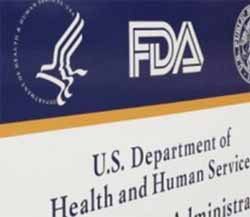US
FDA approves test for cervical cancer risk in women
 The US Food and Drug Administration (FDA) recently approved a human papillomavirus (HPV) DNA test as a first-line screening tool to assess cervical cancer risk in women 25 years and older.
The US Food and Drug Administration (FDA) recently approved a human papillomavirus (HPV) DNA test as a first-line screening tool to assess cervical cancer risk in women 25 years and older.
The test, called cobas HPV test, developed by Roche, uses cervical cell samples to assess women for 14 high-risk HPV strains. In particular, strains such as HPV 16 and HPV 18, which are known to present the greatest risk for the development of cervical cancer.
Cervical cancers in women are caused by HPV infections, with HPV 16 and HPV 18 being responsible for about 70 percent of all cervical cancers. The HPV are a group of about 40 viruses, and are the most commonly sexually transmitted infections, according the CDC. However, in most cases, an HPV infection will go away on its own without causing any health problems. In about 10 percent of women the infection persists and puts them at risk for cervical cancer.
The FDA reported in a news releases that the test was the “first FDA-approved HPV DNA test for women 25 and older that can be used alone to help a health care professional assess the need for a woman to undergo additional diagnostic testing for cervical cancer”. This test is also able to assess the woman’s risk for developing cervical cancer in the future.
The FDA stated that women who test positive for HPV 16 and HPV 18 should have another test known as a colposcopy where the cervical cells can be directly observed by the physician. The FDA also indicated that Women who test positive for one or more of the 12 other high-risk HPV types should have a Pap test to assess their need for a colposcopy.
Alberto Gutierrez, Ph.D., director of the Office of in Vitro Diagnostics and Radiological Health at the FDA’s Center for Devices and Radiological Health, stated in the release that: “Today’s approval offers women and physicians a new option for cervical cancer screening. Roche Diagnostics conducted a well-designed study that provided the FDA with a reasonable assurance of the safety and effectiveness when used as a primary screening tool for cervical cancer.” It is recommended that health care professionals use the test results along with the patient’s history, risk factors, and current professional guidelines.






